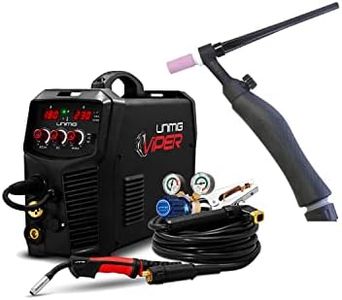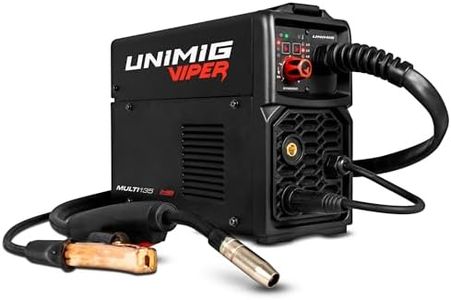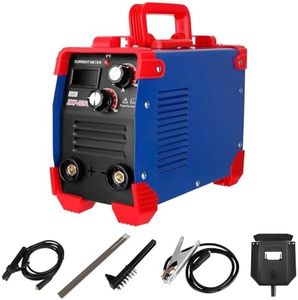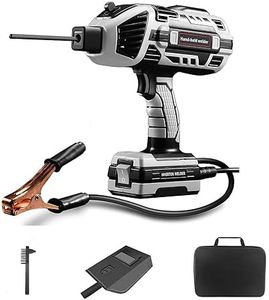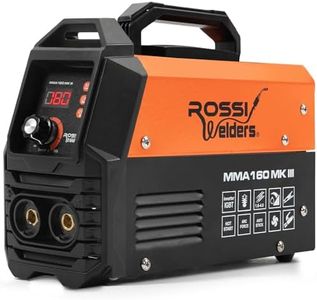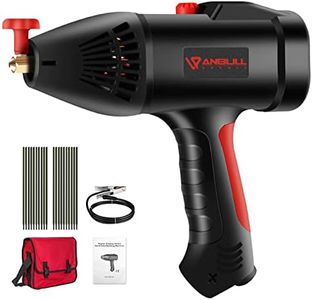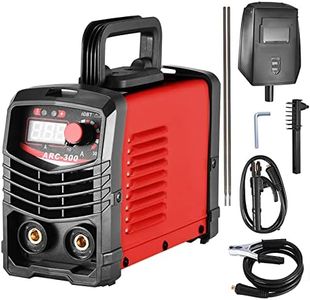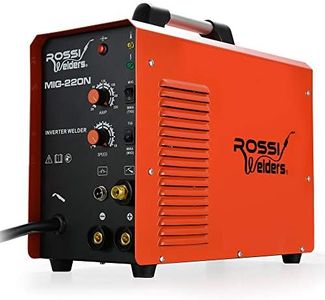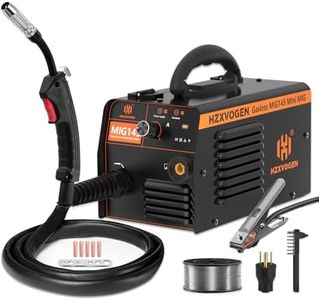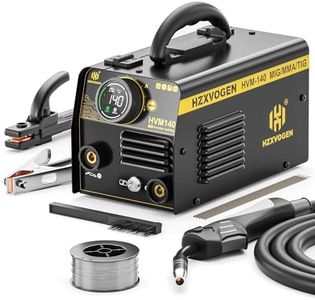We Use CookiesWe use cookies to enhance the security, performance,
functionality and for analytical and promotional activities. By continuing to browse this site you
are agreeing to our privacy policy
10 Best Beginners Welder
From leading brands and best sellers available on the web.Buying Guide for the Best Beginners Welder
Choosing a welder as a beginner might seem overwhelming due to the variety of options available. It's important to focus on welders that are user-friendly, safe, and versatile. Before buying, think about what kind of projects you'll be working on, the materials you'll use, and how much room you have in your workspace. Picking the right welder means balancing ease of use, power, and flexibility to grow with your skills.Welder Type (MIG, TIG, Stick, Flux-Cored)The type of welder determines what materials and thicknesses you can work with, as well as how easy the welding process will be. MIG welders are often recommended for beginners because they are easier to learn and can handle a variety of jobs, especially with mild steel. TIG welders are precise but require more skill, while stick welders are good for outdoor work but can be messier. Flux-cored welders are also beginner-friendly but produce more smoke. Consider what kind of jobs you plan to do: for versatility and ease, MIG or flux-cored are usually good starting points.
Amperage RangeAmperage is a measure of the welder’s power, influencing the thickness of metal you can weld. Lower ranges (around 30-140 amps) are suitable for thin metal sheets and simple repairs. Mid-range welders (up to 200 amps) handle thicker material like frames and brackets. If you need to weld car bodies or do home projects, a lower range might be enough, but for farm equipment or heavy fabrication, a higher amperage is needed. Match your choice to the demands of your projects.
Input VoltageInput voltage refers to the kind of power outlet the welder requires. 110/120V welders plug into standard home sockets and are suitable for lighter work, while 220/240V units are needed for thicker metals and more demanding projects. Some welders are dual-voltage, giving you more flexibility. Choose based on what’s available in your workshop and the size of the materials you expect to weld.
Duty CycleDuty cycle indicates how long the welder can run continuously before it needs to rest, usually shown as a percentage of a 10-minute period. For example, a 20% duty cycle at 90 amps means you can weld for 2 minutes and then need to let the machine cool off for 8 minutes. For quick repairs or occasional use, a lower duty cycle is fine. If you need to weld for extended periods, look for higher numbers.
Ease of Use FeaturesFeatures like simple controls, automatic settings, and clear displays make a big difference for beginners. Some welders offer adjustable wire speed and voltage with clearly labeled dials or even preset modes for common tasks. These design elements help you learn more quickly and avoid mistakes. Prioritize welders with features that make setup and usage simpler, especially if you’re new to welding.
PortabilityPortability refers to how easy it is to move the welder around. Lightweight and compact welders are great if you don’t have a dedicated workspace, want to store the machine easily, or need to take it to different locations. If you’ll always work in one spot and have space, portability is less important. Decide how much you’ll need to move the unit, and select a size and weight accordingly.
Safety FeaturesSafety features like thermal overload protection, proper grounding, and cooling fans help prevent accidents and damage to the machine. These are especially important for beginners who might accidentally misuse the welder. Look for machines with clear safety certifications and built-in protections to give you peace of mind as you learn.

